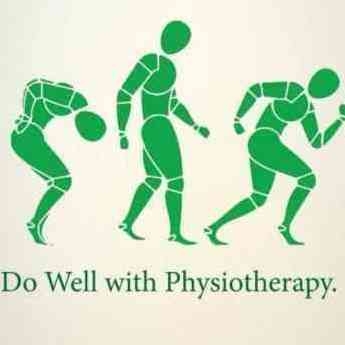+918042754929

This is your website preview.
Currently it only shows your basic business info. Start adding relevant business details such as description, images and products or services to gain your customers attention by using Boost 360 android app / iOS App / web portal.
*A Trigger Point* (TrP) is a hyperirritable sp...
*A Trigger Point* (TrP) is a hyperirritable spot, a palpable nodule in the taut bands of the skeletal muscles' fascia. Direct compression or muscle contraction can elicit jump sign, local tenderness, local twitch response and referred pain which usually responds with a pain pattern distant from the spot[1][2][3][4]. Jump sign is the characteristic behavioral response to pressure on a TrP. Individuals are frequently startled by the intense pain. They wince or cry out with a response seemingly out of proportion to the amount of pressure exerted by the examining fingers. They move involuntarily, jerking the shoulder, head, or some other part of the body not being palpated. *A jump sign* thus reflects the extreme tenderness of a TrP. This sign has been considered pathognomonic for the presence of TrPs. *Local twitch response* - defined as a transient visible or palpable contraction of the muscle and skin as the tense muscle fibers contract when pressure is applied. Coursed by needle penetration or by transverse snapping palpation. *Referred pain* Also called reflective pain, is pain perceived at a location other than the site of the painful stimulus. Pain is reproducible and does not follow dermatomes, myotomes, or nerve roots. There is no specific joint swelling or neurological deficits. Pain from a myofascial TrP is a distinct, discrete and constant pattern or map of pain with no gender or racial differences able to reproduce symptoms - referred pain. *Radiating pain* is slightly different from referred pain; for example, the pain related to a myocardial infarction could either be referred or radiating pain from the chest. Referred pain is when the pain is located away from or adjacent to the organ involved; for instance, when a person has pain only in their jaw or left arm, but not in the chest. *Anatomy and Etiology* Trigger points develop in the myofascia, mainly in the center of a muscle belly where the motor endplate enters (primary or central TrPs). Those are palpable nodules within the tight muscle at the size of 2-10 mm and can demonstrate at different places in any skeletal muscles of the body. We all have TrPs in the body. Can be present even in babies and children, but their presence does not necessarily result in the formation of pain syndrome. When it happens, TrPs are directly associated with *myofascial pain syndrome*, somatic dysfunction, psychological disturbance and restricted daily functioning. *Myofascial Pain Syndrome* refers to regional pain of soft tissue origin and is associated with muscle tenderness that arises from TrPs, focal points of tenderness, a few millimeters in diameter, found at multiple sites in a muscle and the fascia of muscle tissue[8]. *Causes - Usually, TrPs happen due to:* *Aging, * Injury sustained by a fall, by stress or birth trauma. Lack of exercise - commonly in sedentary persons between 27, 5-55 years, of which 45% are men. *Bad posture* - upper and lower crossed pattern, swayback posture, telephone posture, cross-legged sitting, Muscle overuse and respective micro trauma - weightlifting, Chronic stress condition - anxiety, depression, psychological stress trauma, Vitamin deficiencies - vitamin C, D, B; folic acid; iron; Sleep disturbance, Joint problems and hypermobility. Classification of TrPs TrPts can be divided in several groups. *Primary / Central and Secondary / Satellite Trigger Points* Primary or Central TrPs are those that cause severe pain locally at the pressure with irradiation according to referred pain map. Usually are based around the center of a muscle belly. *Secondary or Satellite TrPs* arise in response to existing central trigger points in surrounding muscles. They usually spontaneously withdraw when the central TrP is healed. Can be present in the form of a cluster. Active AND Inactive /Latent Trigger Points Active TrP is any point that causes tenderness and referral pain pattern on palpation. Almost always central TrPs are active and some satellite TrPs are also active (but not necessarily all of them). Inactive TrPs can eventually become active if there is a provocative factor. Inactive or Latent TrPs can develop in anywhere and under fingertips feel like lumps, but are not painful. Can increase a stiffness of the muscles. Dr Ayaz Physiotherapy weight loss hair and skin clinic nallasopara

